You know compost is a must-have for a healthy, organic garden. You also know you “should” be composting, but it can seem so intimidating to get started. And when is compost actually ready to use, anyway?
Composting is a fantastic way to recycle food and garden scraps into fertile soil that will take your gardening to the next level, hence its nickname, Black Gold. But, like all things good in life, compost takes time to mature into energy-rich soil — so when is it ready?
Eliminate doubt and use compost with confidence when you read this guide to knowing when compost is ready to use, including a simple trick for testing your compost.
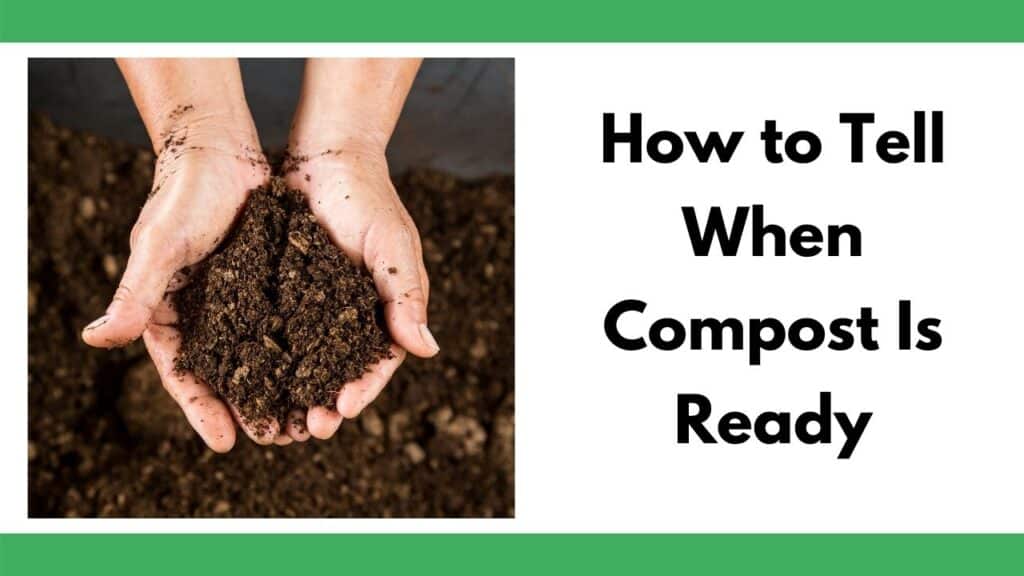
Compost is ready when the process of decomposition has finished. At this point, the compost will have become a dark, crumbly material, the original organic material will no longer be recognizable, and it will have a pleasant earthy smell.
Waiting for compost to finish decomposing may feel like watching paint dry, but it is essential to make sure you give your compost time to mature.
Putting compost into your garden before it is ready can negatively impact plant development. Luckily, it is easy to identify when compost is finished decomposing when you know what to look for.
To keep your compost pile healthy and active, discover the best compost aerators to save your back and get your pile hot again.
Table of Contents
When is Compost Ready?
This post includes affiliate links. If you make a purchase using one of these links, Together Time Family will receive a commission at no additional cost to you.
There are two types of composting: thermophilic (hot) compost and mesophilic, or “cold,” compost.
Thermophilic compost produces safe, ready compost more quickly than cold compost, but it also takes a little more work. Thermophilic composting quickly destroys pathogens and many weed seeds (source).
- Mesophilic (primary) phase: This phase is when most of the decomposition occurs, and your compost pile is experiencing the most amount of biological and chemical activity. When this stage is over, the raw organic material put into the compost should be mostly indistinguishable, and the offensive odor of rotting food is mostly gone.
- Thermophilic (secondary) phase: This phase is when the decomposers begin to refine the compost and continue to break it down. When this stage is over, you will no longer be able to recognize the original organic material. Some home compost piles never reach this phase and stay in the mesophilic stage.
- Cooling phase: During this phase, the compost will cool off and will dry out a little. When this stage is over, your compost pile should be about half as big as it started. This stage is sometimes called the “finishing” stage because the compost will appear to be ready.
- Curing phase: The curing stage is a quality control stage. During this stage, your compost pile is undergoing essentially the same chemical and biological processes as it was during the cooling phase, but the extra step ensures your compost is consistently finished throughout your pile. When this stage is done, your compost will be ready to use in the garden.
The amount of time needed for your compost to go through each phase will vary depending on what you put into your compost, your compost pile’s size, and how it is managed.
An easy way to minimize the amount of time needed to compost is to add small pieces of material. Chip or shred lawn material and cut kitchen scraps into small pieces, especially if they’re difficult items like citrus or banana peels. Do not add pieces as shown in the image below:
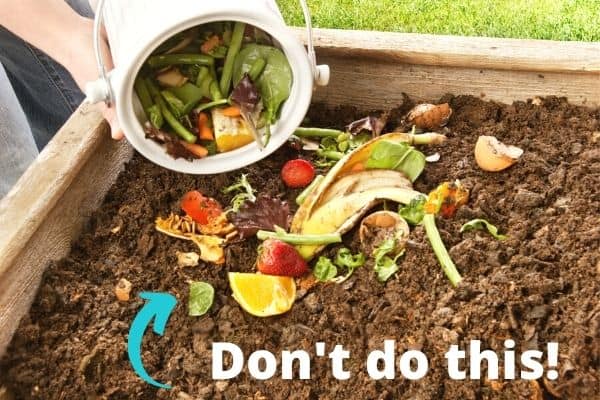
(Also, don’t add new material on top of your finished compost, as shown in the photo above.)
The Clemson Extension has a great page on the life cycle of compost, including a graph of usual temperature changes in the pile over time.
What Happens if You Use Compost Before It’s Ready?
Using unfinished compost can hurt your plants in several ways:
It can prevent germination because it contains phytotoxins. Radishes are particularly affected.
Unfinished compost could burn your plants. If the decomposition process has not been allowed to run its course, compost will continue to generate a high amount of heat, which can burn developing plants.
It could harbor diseases and parasites. Uncured compost may still carry some diseases and parasites that will be passed along to any developing flora planted in the unfinished compost.
It could suffocate your plants: The decomposition process requires a lot of nitrogen and oxygen. When the immature compost uses them to finish decomposing, the new plants will not get enough oxygen to grow.
This is why it is vital to allow your compost time to cure and be able to identify when compost is truly ready for use.
How to Tell When Compost is Ready
Cured compost possesses several characteristics.
Pay attention to your compost pile and use the following sections to help you determine whether your compost is ready for the garden.
Finished compost temperature
Compost will stop giving off heat when it is ready. If it is steaming or noticeably hot, it is not ready.
Not all home compost piles become thermophilic, so a lack of heat is not the only indication compost is ready.
In order to become thermophilic, or “hot,” compost must have enough bulk, enough oxygen, enough water, and an appropriate ratio of carbon to nitrogen containing materials.
Although some people (and books) stress over getting the ratio just right and check their compost temperature constantly, this isn’t necessary. Cold compost is completely valid and useful – it just takes longer to become ready and safe to use.
Finished compost color and texture
Finished compost should look like dark, rich soil. You may have small pieces of egg shell in your compost, or little twigs. This is fine as long as the rest of the compost is dark brown and crumbly.
Finished compost should resemble the compost in the image below:
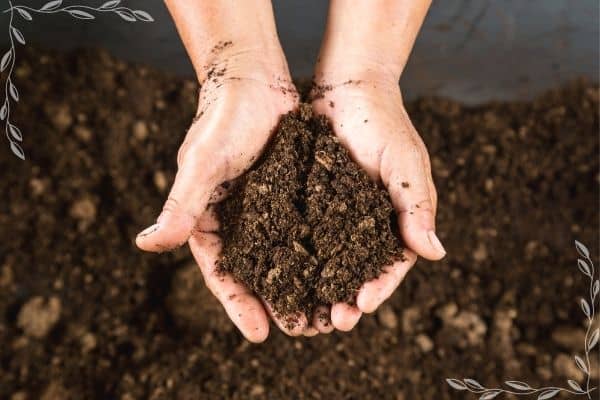
Finished compost smell
Finished compost should smell like soil, not a rotting vegetable heap or ammonia. If it smells “off,” it’s not ready yet.
Finished compost pile size
The size of your compost pile will have reduced by fifty percent or more by the time it is ready to use.
This video has a quick, helpful guide to identifying ready compost:
When your compost matches the above descriptions, it is most likely ready to be used.
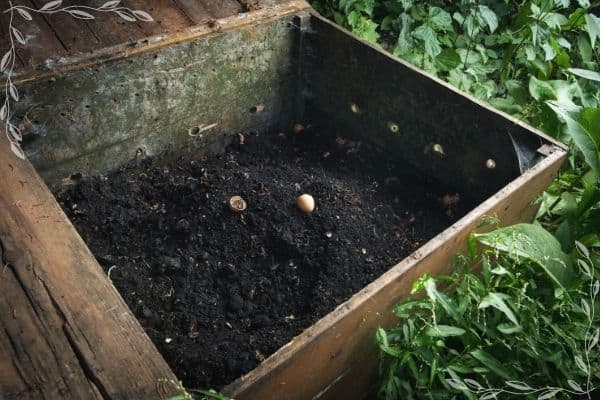
Compost Maturity Test
If you are going to be planting super sensitive plants in your compost, it might be a good idea to conduct a test to make sure your compost is cured, and there are no phytotoxins in your soil.
The radish test is the fastest compost maturity test. Radishes normally have a great germination rate, but are very sensitive to compounds in unfinished compost. Use two similar containers. Fill one with commercial seed starting mix (ideally) or potting soil. Fill the other with your compost.
Place the containers in the same environment and plant 20 radish seeds in each. If the rate of germination in the compost is 80% or more of the seed starting mix germination rate, the compost is ready to use. If the compost radish germinates at less than 80% off the seed starting mix radish, hold your compost longer and test again later. (Mini Farming, page 58).
For a complete guide on radishes, please see this post on how to plant and grow radish.
Finished compost can be used in a variety of ways. It’s great for improving soil structure if you have clay or sandy soil. Working two inches of compost into the top 6-8″ of your garden soil is sufficient to improve soil structure (source).
No-till gardeners rely on large quantities of compost and essentially use it instead of soil.
Charles Dowding is a world-known expert in no dig gardening. Read his book Organic Gardening the Natural No-Dig Way for an in-depth look at this method and his results comparing dug and undug beds.
How Long Does Compost Take?
The amount of time it takes for your compost to breakdown will depend upon the size of your compost pile, what organic material you put into your compost, and, most importantly, the method you use to manage your compost pile.
Making sure you have adequate bulk, turning your compost with an aerator when it starts to cool down, and giving your compost enough water can all help it decompose more quickly. In general, you need to water your compost pile when you turn it. Always pay attention to your specific pile and its needs – it may need more or less water, depending on your weather.
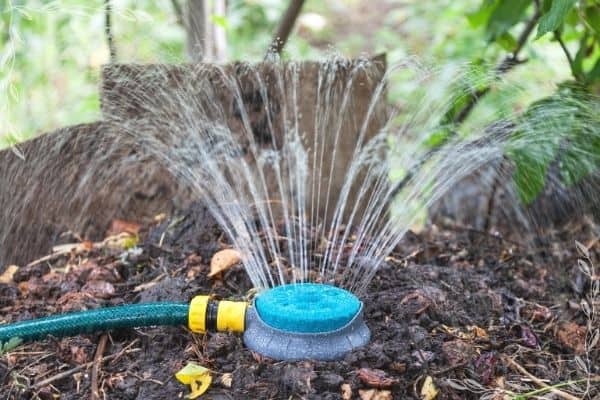
According to Brett Markham, author of Mini Farming: Self-Sufficiency on 1/4 Acre, hot or cold compost made only from non-diseased plant material can be ready in as little as six months. Worm compost can be ready faster, but that’s a topic for a different post!
If there are potentially diseased plants, animal remains, feces, or other hazards, thermophilic compost needs to be held for a year and mesophilic compost needs to be held for two years (If you own this book, turn to page 51 for the start of the chapter on compost.)
According to the Compost Council of Canada, six months is sufficient holding time for compost if it has been composted thermophilically. Follow these general holding times to be safe:
- 6 months if your compost contained only disease-free plant material
- 12 months if your thermophilic pile may have had diseased plants or animal matter
- 24 months if your mesophilic pile may have had diseased plants or animal matter
Hot Composting
Hot composting refers to an active composting method; a hot compost pile is turned regularly. Hot composting will reduce the time it takes for your compost to decompose. This is primarily because turning the pile ensures the decomposers are supplied with plenty of oxygen.
It is also easy to know when a hot compost pile is finished. Hot compost piles will not heat up anymore when it’s ready, even after it has been turned. After that, simply give the compost a few weeks to set and cure, and then you can use it.
Cold Composting
Cold composting refers to an inactive method of composting. Cold composting takes longer to decompose because these piles are left alone to do their thing. The time it takes for a cold compost pile to decompose depends on the compost materials.
Shredding the compost material before putting it into a cold pile will significantly reduce the time it needs to pass through the compost phases.
Final Thoughts
Learning how to compost and identify when it ready to be used in the garden takes practice. The amount of time it takes for compost to finish transitioning through the composting phases depends on several variables, including the size of your operation.
In general, smaller, actively maintained “hot” compost piles will take less time to compost fully, and when the compost is ready to use, it will be cool, dark brown, and will smell like a forest.
If you are looking for more educational material about composting, several US-based Land Grant Universities, like the University of Illinois, has extension offices that offer a wide range of helpful toolkits for aspiring composters.
Composting & Soil
Healthy soil is a must for a healthy garden.
Discover these signs of bad potting soil so you know if you can use your old potting soil or need to toss it.
Can you reuse potting soil from last year? Or do you need to buy more potting soil each year?
Earthworms improve soil structure and add natural fertilizer to your garden. Discover how to attract more earthworms to your garden this year!
Aerating compost helps keep a pile hot, but it can be backbreaking work. Discover the best compost aerators to save you time and backaches.
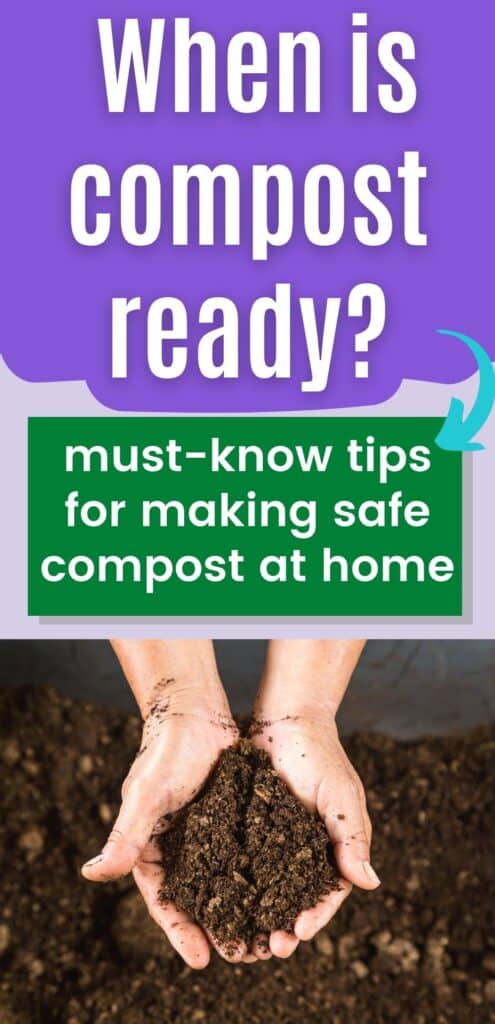
Natasha Garcia-Lopez is an avoid home-gardener and proud owner of 88 acres of land in rural West Virginia. She was a member of the Association for Living History Farms and Agricultural Museums for many years and is currently enrolled in the Oregon State University Master Gardner Short Course program so she can better assist you with your gardening questions.She holds a certificate in natural skincare from the School of Natural Skincare.

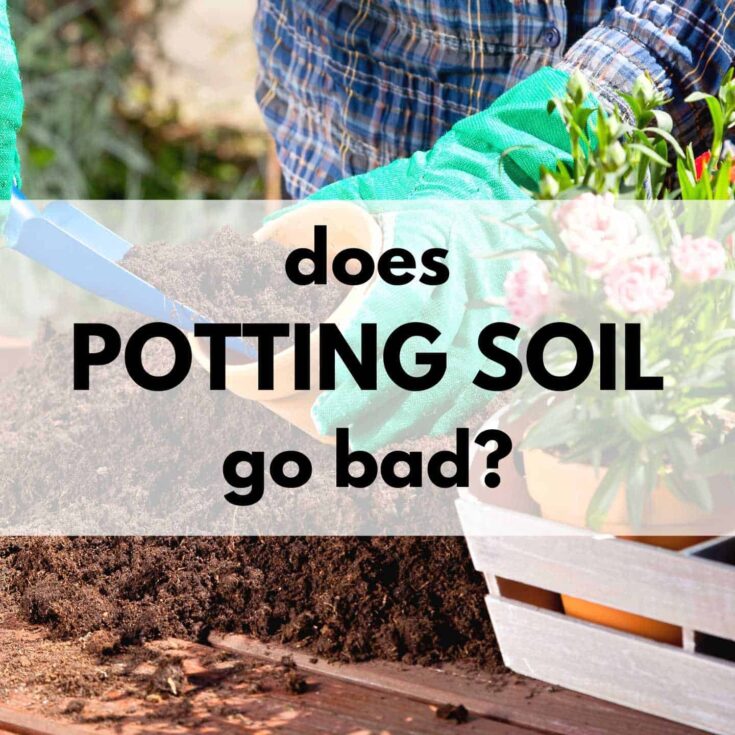
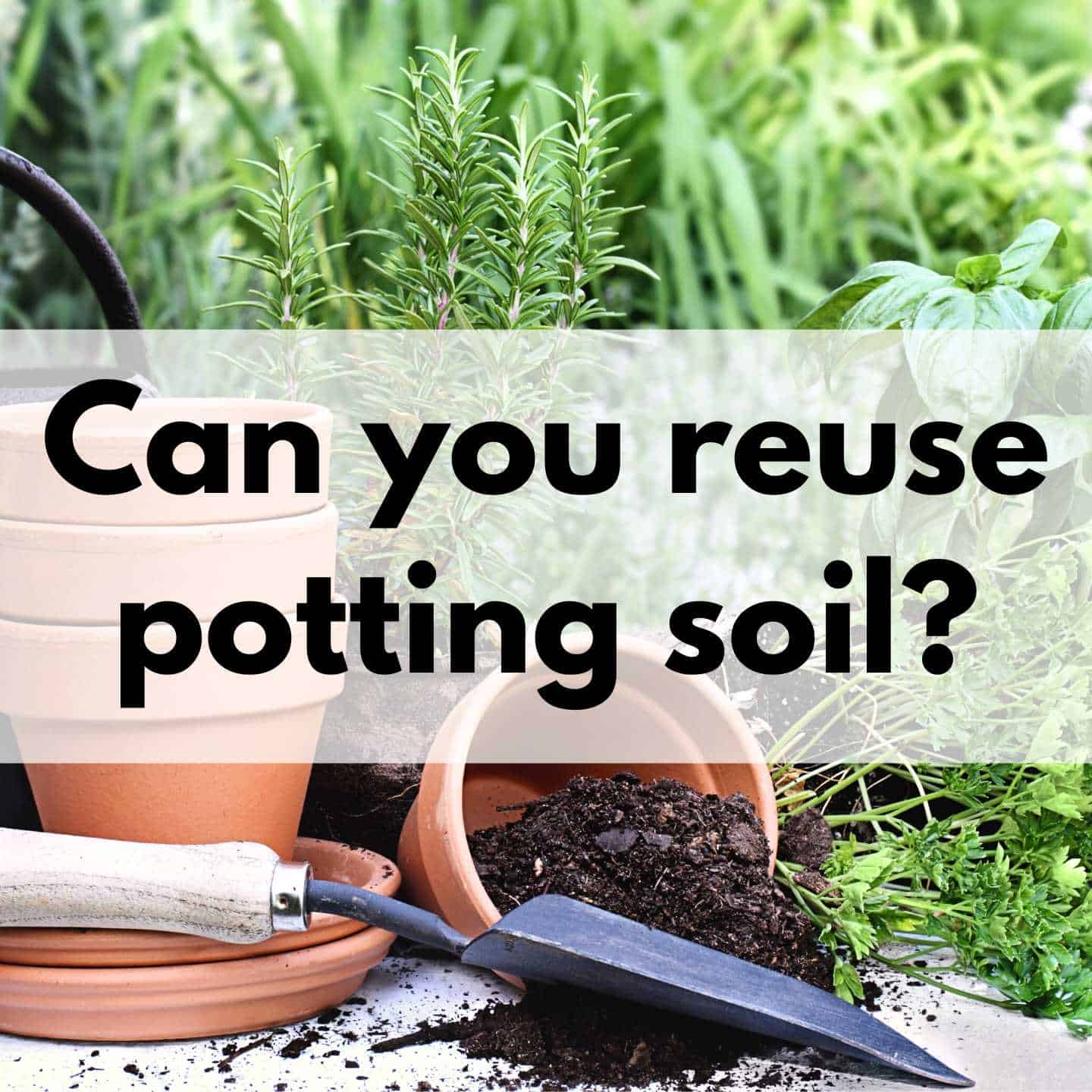
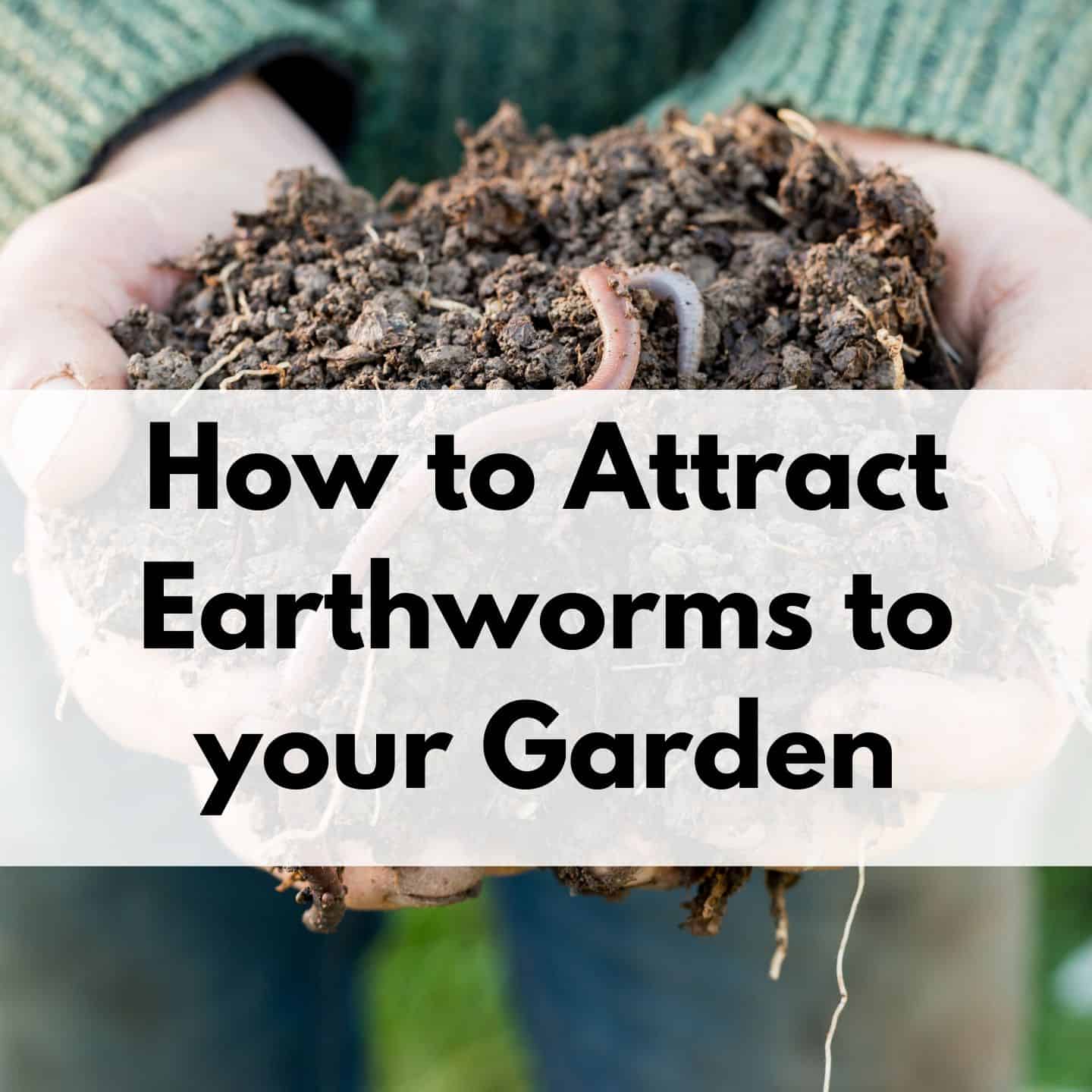
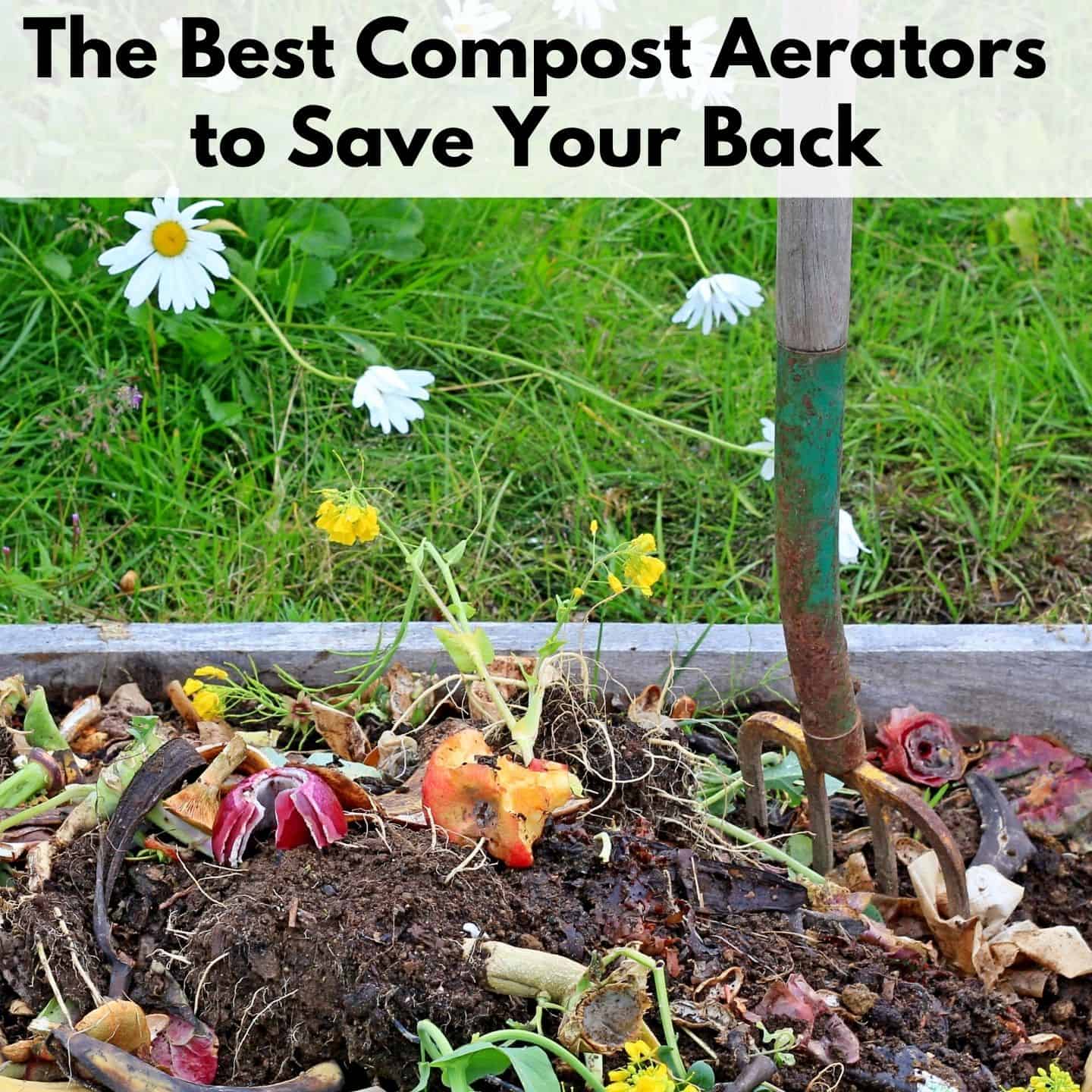

Leave a Reply